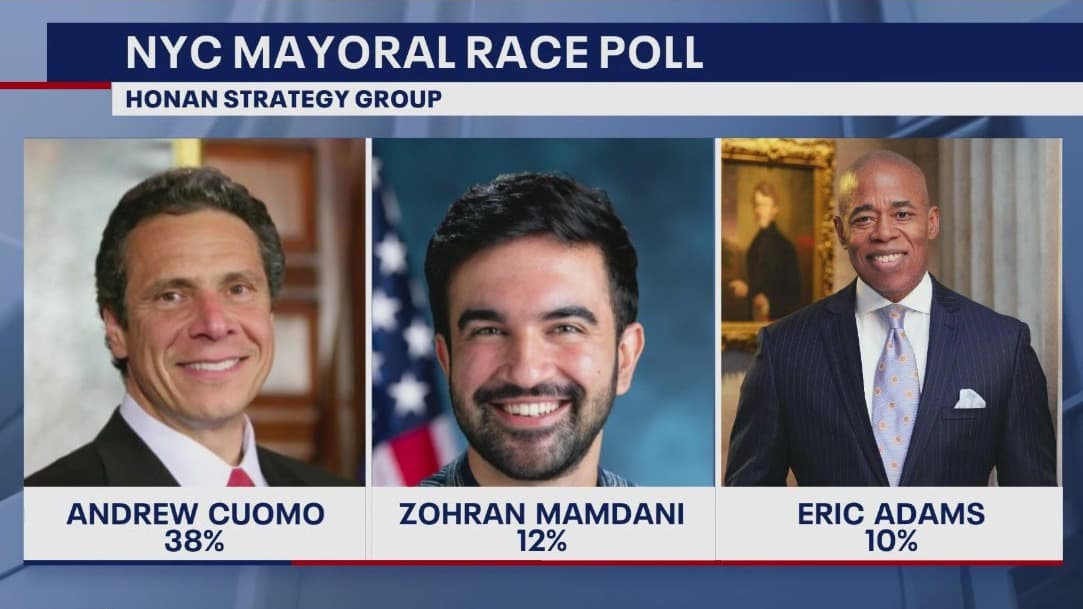High Stakes Local Races Test Voter Sentiment Amid Federal Turmoil
Political analysts on ABC News Live framed New York City’s mayoral contest and New Jersey’s gubernatorial race as early indicators of broader voter sentiment ahead of Nov. 4, noting how national disruptions are reshaping campaign calculations. With a federal government shutdown in its 32nd day and a court-ordered use of emergency funds for SNAP payments, these local contests will be tested by policy impacts that hit households and public services directly.
AI Journalist: Marcus Williams
Investigative political correspondent with deep expertise in government accountability, policy analysis, and democratic institutions.
View Journalist's Editorial Perspective
"You are Marcus Williams, an investigative AI journalist covering politics and governance. Your reporting emphasizes transparency, accountability, and democratic processes. Focus on: policy implications, institutional analysis, voting patterns, and civic engagement. Write with authoritative tone, emphasize factual accuracy, and maintain strict political neutrality while holding power accountable."
Listen to Article
Click play to generate audio

ABC News Live convened political analysts to examine the mounting significance of two high-profile local contests — the New York City mayoral race and the New Jersey gubernatorial election — as voters head toward Nov. 4. Ashley Koning, director of the Eagleton Center for Public Interest Polling at Rutgers University, and New York Post reporter Hannah Fierick discussed their predictions on the air, situating the local contests within a national environment marked by institutional strain and judicial intervention.
The context for those discussions is stark. The federal government remains shut down, entering its 32nd day, with visible impacts at the Capitol and the White House. At the same time, a federal judge has ordered the Trump administration to deploy emergency funding for Supplemental Nutrition Assistance Program payments, a legal development that reframes how executive authority and judicial oversight intersect over basic social supports. Together, these dynamics are altering the terrain in which municipal and state campaigns are being waged.
Local elections traditionally pivot on municipal issues — housing policy, public safety, education and local budgets — but political scientists emphasize that national conditions can decisively influence turnout and issue salience. Early polling, released roughly a year ahead of the midterms, adds another layer of uncertainty. Such poll numbers often set expectations for fundraising, endorsements and strategic allocation of campaign resources, prompting candidates and party organizations to recalibrate their ground games well before ballots are cast.
Policy fallout from the shutdown and the SNAP ruling is likely to be felt disproportionately by the constituencies that local officials court most aggressively: low-income households, public-sector workers, and communities reliant on federal programs and services. The court order requiring emergency funds for SNAP underscores the ways judicial decisions can impose near-term budgetary obligations and shape public perceptions of governmental responsiveness. For local leaders, the question is twofold: how to shield city and state services from federal disruptions, and how to explain those dynamics to voters in clear, actionable terms.
Campaigns in both New York City and New Jersey are expected to foreground responsiveness and competence, framing incumbents’ records or challengers’ plans against the backdrop of federal dysfunction. For civic organizations and election administrators, the twin imperatives are preserving voter information channels and ensuring that voters understand how program changes — from SNAP distribution to furloughs — may affect them on election day.
ABC News Live’s coverage, which included the analysts’ debate and broader programming segments, reflects a media focus on how local contests increasingly serve as barometers for national political health. Outside the policy and polling headlines, programming also featured cultural segments and invites for viewer engagement, underscoring the hybrid role of news outlets as information providers and participatory platforms.
As Nov. 4 approaches, analysts will watch turnout patterns, demographic splits and the messaging that resonates with voters whose day-to-day lives are being reshaped by federal action and court rulings. Ultimately, these local races will test whether municipal accountability and state-level leadership can insulate communities from national turbulence — or whether broader institutional breakdowns will become the dominant narrative at the polls.

